Chapter One: The Birth of a Rebel
In the modest confines of a Chicago winter, under a sky pregnant with snow, Patti Smith entered the world on December 30, 1946. Born to a family of modest means, she was cradled by the whispers of stories untold and the silent melodies of dreams yet to be sung. From an early age, the world spoke to her in a language of poetry and rhythm. These whispers and melodies would eventually shape her into a beacon of artistic expression, a muse whose influence would span generations.
Her childhood was a blend of simplicity and profound introspection. The streets of Chicago, with their urban grit and hidden beauty, became the backdrop to her nascent dreams. Her father, an industrial worker, and her mother, a jazz singer turned waitress, infused her with a unique blend of discipline and artistic inclination. The tales of jazz and blues, and the rhythmic stories of the working class, seeped into her consciousness, setting the stage for her future artistic endeavors.
Patti’s first forays into the world of literature were like the tentative steps of a fawn exploring a vast, new landscape. Her debut poetry collection, “Seventh Heaven,” published in 1972, was not merely a book but a portal into a world of raw emotion and vivid imagery. Each poem was a heartbeat, a moment captured in time, painting urban landscapes and personal longings with strokes of existential wonder. It was the first note in a symphony that would grow richer and more profound with time.

Chapter Two: Words as Light and Shadow
The evolution of Patti Smith as a writer was akin to watching a flower bloom in slow motion, each petal unfurling to reveal deeper layers of beauty and complexity. Her pen became a magical wand, casting spells that drew readers into her world of dreams and reflections. In 1973, “Witt” graced the world—a collection of poems pulsating with youthful energy and the deep musings of an ancient soul. Her words were like delicate brushstrokes on a vast canvas, each one meticulously placed to form a portrait of human experience.
“Seventh Heaven” and “Witt” were but preludes to the magnum opus that was “Babel,” released in 1978. This poetic journey delved into the labyrinth of chaos and order, personal tales intertwined with myth and history. Her prose was a riddle, wrapped in mystery, resonating with those who dared to look deeper. “Babel” was a mirror, reflecting not just the world but the intricate layers of her own being, inviting readers to lose themselves in its enigmatic beauty.
Each subsequent collection of poems, from “Early Work, 1970-1979” to “The Coral Sea,” was a testament to her relentless quest for artistic truth. Her words were a symphony of light and shadow, hope and despair, capturing the essence of the human condition with unparalleled poignancy.
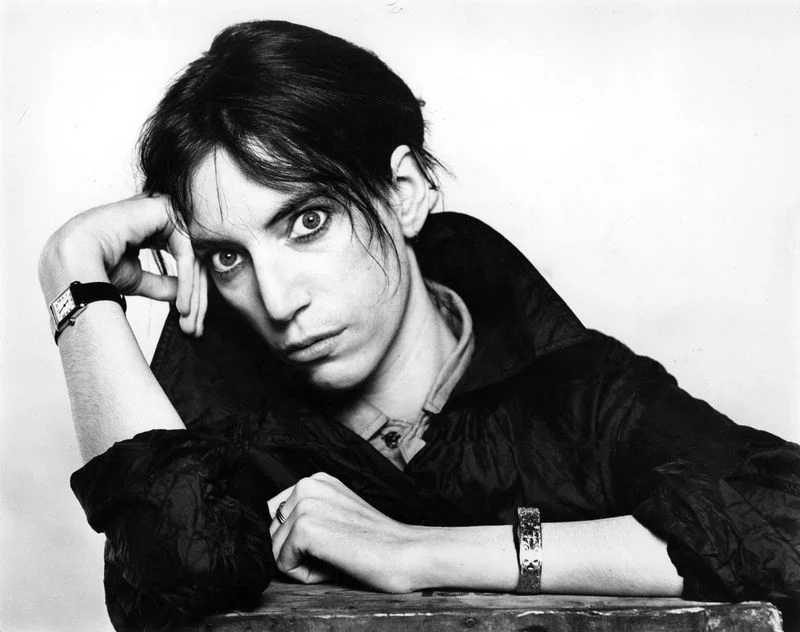


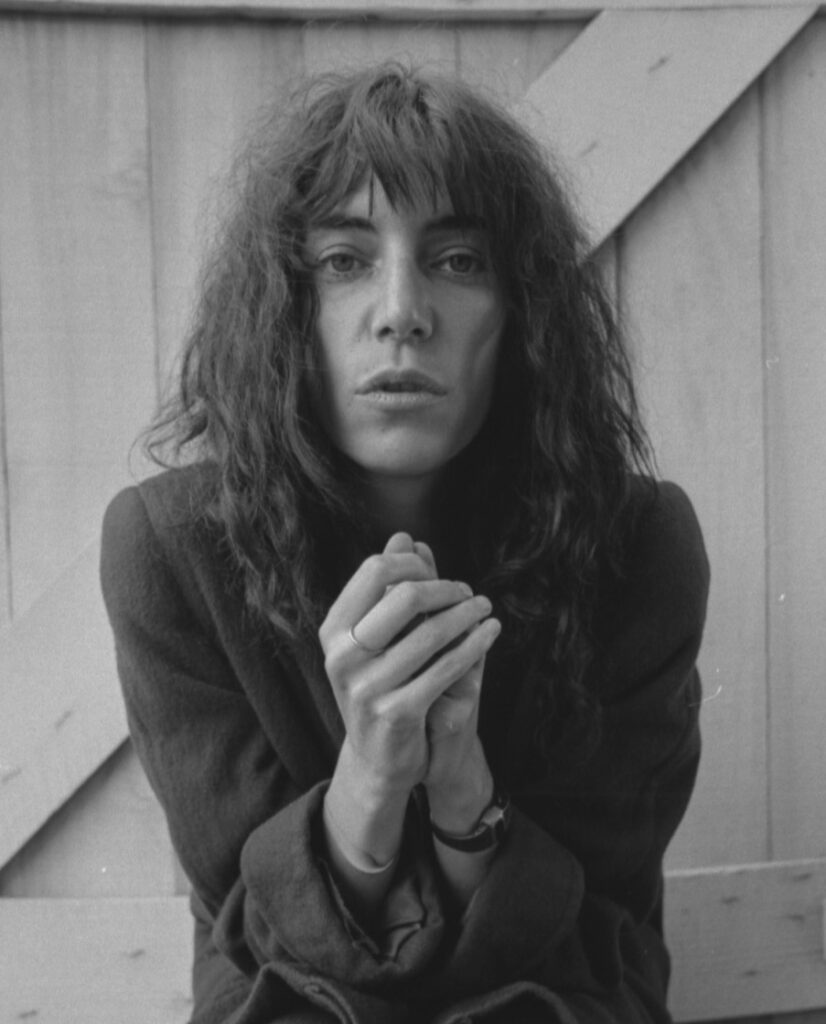
Chapter Three: The Alchemy of Sound
Parallel to her literary endeavors, Patti Smith’s musical journey was nothing short of alchemical. In 1975, she released her debut album, “Horses,” a magnum opus that would forever alter the landscape of rock music. The album’s cover, featuring a stark black-and-white photograph of Patti, taken by Robert Mapplethorpe, was iconic. It was a visual proclamation of her defiance and individuality.
The opening track, “Gloria,” was a declaration of independence, a manifesto of defiance and a call to arms for the disenfranchised. With her raw, unfiltered voice and poetic lyrics, Patti carved a niche for herself in the pantheon of rock legends. The album was a perfect fusion of punk energy and poetic introspection, capturing the zeitgeist of the era while also transcending it.
“Horses” was followed by “Radio Ethiopia” in 1976, an album that further solidified her status as a trailblazer. Its title track was a cacophonous symphony, a testament to her willingness to push the boundaries of musical convention. Each subsequent album, from “Easter” in 1978 to “Wave” in 1979, showcased her versatility and unwavering commitment to artistic integrity. Songs like “Because the Night” and “Dancing Barefoot” became anthems of a generation, encapsulating the spirit of rebellion and the yearning for freedom.

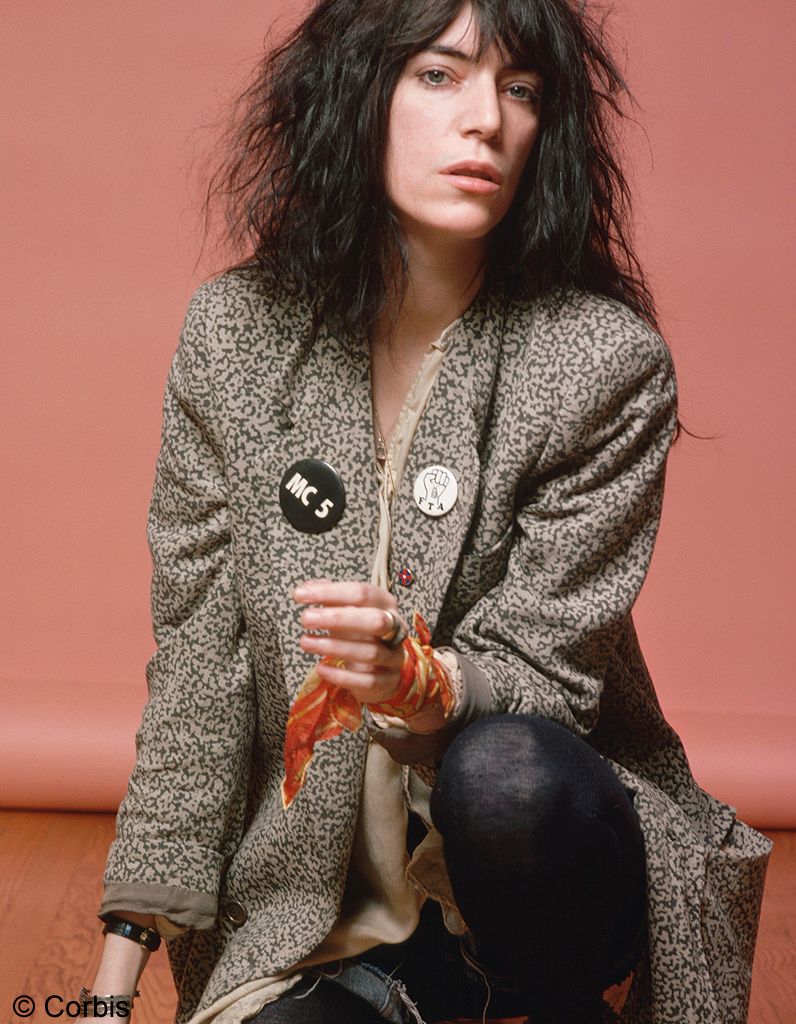

Chapter Four: Capturing the Ephemeral
As the years flowed, Patti Smith’s artistry expanded into new realms. Photography became another canvas, another way to capture the fleeting beauty of the world. Her exhibitions were more than displays; they were immersive experiences, portals into her vision of reality.
In 2010, “Camera Solo” unveiled a series of black-and-white photographs, each one a meditation on time and memory. Her images of places like the graves of Arthur Rimbaud and Virginia Woolf were poignant tributes, connecting her deeply to the literary figures who had inspired her. Each photograph was a whisper, a moment frozen in time, speaking of both presence and absence.
Her subsequent exhibitions, such as “Patti Smith: 18 Stations” in 2014, continued to explore themes of memory and transience. Here, she juxtaposed her photographs with excerpts from her writings, creating a dialogue between text and image that was both intimate and universal. Through her lens, ordinary objects became relics of personal significance, each one imbued with a story waiting to be told. Her visual art was a testament to her ability to see the extraordinary in the mundane, capturing the ephemeral beauty of moments often overlooked.

Chapter Five: The Novelist’s Dream
Patti Smith’s journey into novel writing was a natural progression of her artistic evolution. Her memoir, “Just Kids,” published in 2010, was a poignant chronicle of her relationship with the photographer Robert Mapplethorpe. The book was a love letter to a bygone era, a nostalgic reflection on the bohemian days of New York City in the 1960s and ’70s. Her prose was lyrical, each sentence a brushstroke painting the vibrant portrait of her life and the people who shaped it.
“Just Kids” was not just a memoir; it was a testament to the power of friendship and the transformative nature of art. It captured the essence of a time when New York City was a crucible of creativity, a place where dreams were born and nurtured. Patti’s narrative was filled with love, loss, and the relentless pursuit of artistic truth, resonating deeply with readers around the world.
“M Train,” published in 2015, was more introspective and meditative. Here, Patti wandered through the landscapes of her memories, reflecting on loss, creativity, and the passage of time. Her writing was imbued with a sense of longing, a yearning for the intangible and the ephemeral. The book was a testament to her enduring spirit and her relentless pursuit of artistic truth. Each chapter was a journey, a glimpse into the quiet moments of her life, filled with reflections on the places and people that had left an indelible mark on her soul.
In 2019, Patti released “Year of the Monkey,” a surreal memoir that blurred the lines between reality and fantasy. Her narrative was dreamlike, weaving together fragments of her travels and encounters with a sense of whimsy and melancholy. It was a journey through the labyrinth of her mind, a reflection on the nature of existence and the elusive quest for meaning. Her words were a dance between the real and the imagined, capturing the essence of a world in flux.



Chapter Six: The Symphony of Silence
In her later years, Patti Smith’s artistry has become increasingly introspective, a silent symphony that resonates with the echoes of her past. Her poetry collections, such as “Auguries of Innocence” (2005) and “Devotion” (2017), are meditations on the delicate balance between light and darkness, hope and despair. Her words are like whispers in the wind, carrying with them the weight of a lifetime of experiences.
“Auguries of Innocence” is a collection that delves into the interconnectedness of life, exploring themes of nature, humanity, and the spiritual realm. Each poem is a delicate thread in the tapestry of her vision, weaving together moments of profound beauty and deep sorrow. Her words are both a cry for justice and a hymn of praise, capturing the complexity of the human condition.
“Devotion” is a more personal and introspective work, a meditation on the creative process and the nature of inspiration. Through a blend of prose and poetry, Patti reflects on the act of creation, the moments of clarity and doubt that accompany it. Her writing is a testament to her unwavering dedication to her craft, a reminder of the power of art to transcend time and space.
Her musical projects, too, have evolved, reflecting a more contemplative and nuanced approach. Albums like “Banga” (2012) and “Outside Society” (2011) are explorations of themes of mortality, legacy, and the enduring power of art. Her voice, though weathered by time, remains as powerful and evocative as ever, a testament to her enduring spirit.
“Banga” is an album that traverses the realms of myth and reality, drawing inspiration from literary and historical sources. Songs like “April Fool” and “Maria” are imbued with a sense of timelessness, capturing the essence of human experience. The album is a journey through the landscapes of the soul, a reflection on the enduring power of love and creativity.
“Outside Society” is a compilation of her greatest hits, a retrospective of her musical journey. Each song is a milestone, a testament to her impact on the world of music. From the raw energy of “Gloria” to the introspective beauty of “Pissing in a River,” the album is a celebration of her artistic legacy.
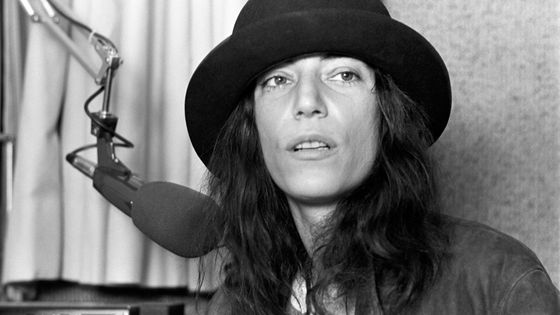
Chapter Seven: The Eternal Wanderer
Patti Smith’s journey is far from over. Her art continues to evolve, each new creation a testament to her boundless creativity and unwavering dedication. She is a muse in motion, an eternal wanderer in the realms of poetry, music, and visual art.
Her legacy is not just in the works she has created but in the inspiration she has kindled in countless others. She is a beacon of artistic integrity, a symbol of the power of the human spirit to transcend boundaries and forge new paths.
As we stand on the cusp of a new era, Patti Smith’s voice continues to echo, a timeless reminder of the beauty of the world and the endless possibilities of the creative soul. Her journey is a testament to the transformative power of art, to heal, inspire, and transcend. And as long as there are stories to be told and songs to be sung, her spirit will endure, a guiding light in the ever-evolving tapestry of human expression.


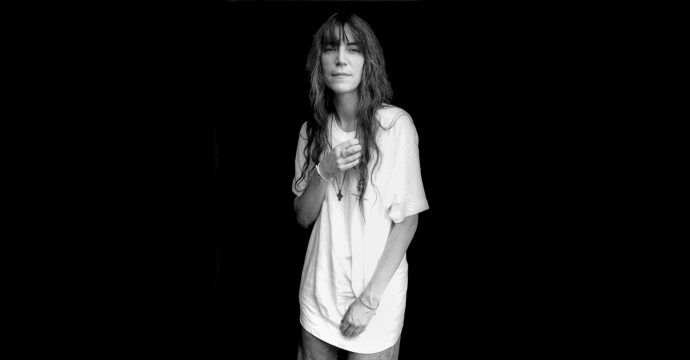
Chapter Eight: The Tapestry of Influences
Patti Smith’s art is a rich tapestry woven from myriad influences, each thread a homage to the artists, writers, and musicians who have shaped her vision. Her work is a dialogue with the past, a conversation with the ghosts of those who have inspired her.
From the poetry of Arthur Rimbaud and William Blake to the music of Bob Dylan and the Rolling Stones, Patti’s influences are as diverse as they are profound. Her art is a testament to the power of inspiration, a reminder of the interconnectedness of all creative endeavors.
Her photographic exhibitions often feature tributes to these influences, capturing the essence of the places and objects that have left an indelible mark on her soul. The graves of Rimbaud and Blake, the haunts of Dylan and the Stones, are more than just locations; they are sacred spaces, imbued with the spirit of creativity.
In her writing, too, these influences are palpable. “Just Kids” is as much a tribute to Robert Mapplethorpe as it is a reflection on her own journey. The book is filled with references to the artists and writers who shaped their shared vision, creating a rich tapestry of influences that extends far beyond their personal story.
“M Train” and “Year of the Monkey” continue this dialogue, blending personal reflections with tributes to the artists and places that have inspired her. Patti’s writing is a journey through the landscapes of her mind, a reflection on the power of art to transcend time and space.
Chapter Nine: The Alchemy of Collaboration
Throughout her career, Patti Smith has embraced collaboration as a means of artistic expression. Her partnerships with artists, musicians, and writers have enriched her work, adding new dimensions to her creative vision.
Her collaboration with Robert Mapplethorpe was a defining moment in her career. Their shared vision and mutual support helped to shape their respective artistic paths, creating a body of work that continues to inspire.
In the realm of music, Patti’s collaborations with musicians like Bruce Springsteen, Tom Verlaine, and Michael Stipe have resulted in some of her most iconic songs. “Because the Night,” co-written with Springsteen, is a testament to the power of collaboration, capturing the raw energy and emotional depth of both artists.
Her work with playwright Sam Shepard, particularly the play “Cowboy Mouth,” showcased her versatility as an artist and her willingness to explore new creative territories. The play, a raw and unfiltered exploration of love and ambition, remains a testament to their shared vision and collaborative spirit.
In recent years, Patti’s collaborations with contemporary artists and writers have continued to push the boundaries of her work. Her participation in events like the Nobel Prize ceremony for Bob Dylan and her collaborations with young poets and musicians are a testament to her enduring influence and her commitment to nurturing the next generation of artists.
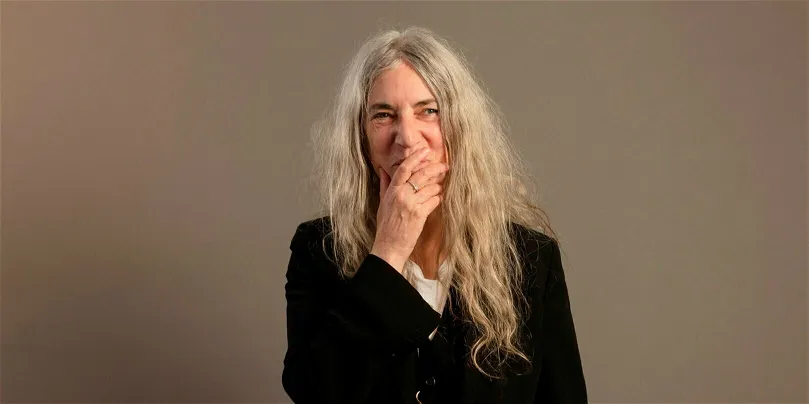
Chapter Ten: The Echoes of Legacy
Patti Smith’s legacy is a living, breathing entity, a testament to the transformative power of art. Her influence extends far beyond her own work, inspiring countless artists, writers, and musicians to explore their own creative paths.
Her impact on the world of music is immeasurable. Artists like R.E.M., U2, and PJ Harvey have cited her as a major influence, drawing inspiration from her raw energy and poetic vision. Her songs have become anthems, capturing the spirit of rebellion and the quest for truth.
In the literary world, Patti’s writing has inspired a new generation of poets and novelists to embrace their unique voices. Her memoirs, in particular, have resonated deeply with readers, offering a glimpse into the life of an artist dedicated to her craft.
Her visual art, too, continues to inspire. Her photographs, with their intimate and contemplative quality, have influenced contemporary photographers to explore the intersection of text and image. Her exhibitions are more than just displays; they are immersive experiences that invite viewers to see the world through her eyes.
Patti’s influence extends beyond the realm of art, touching the lives of those who have been moved by her work. Her activism, her commitment to social justice, and her unwavering dedication to her craft are a beacon of hope and inspiration.

Chapter Eleven: The Eternal Return
As Patti Smith continues her journey, her art remains a testament to the enduring power of creativity. Each new work is a chapter in the ongoing story of her life, a reflection of her ever-evolving vision.
Her recent projects, from poetry collections to musical performances, are imbued with a sense of continuity and renewal. Her work is a dialogue with the past, a reflection on the present, and a vision for the future.
Patti’s journey is a reminder that art is a living, breathing entity, constantly evolving and transforming. Her legacy is not just in the works she has created but in the inspiration she has kindled in countless others.
As long as there are stories to be told and songs to be sung, Patti Smith’s spirit will endure. Her journey is a testament to the power of art to heal, inspire, and transcend. And as we stand on the cusp of a new era, her voice continues to echo, a timeless reminder of the beauty of the world and the endless possibilities of the creative soul.

Chapter Twelve: The Muse in Motion
In the grand tapestry of art and life, Patti Smith stands as a beacon of integrity, passion, and relentless creativity. Her journey is one of perpetual motion, an endless dance between the realms of poetry, music, and visual art.
Her story is a reminder that the muse is not a static entity but a force of nature, constantly evolving and transforming. Patti’s art is a testament to the power of the human spirit to transcend boundaries, to forge new paths, and to create beauty in the face of adversity.
As we look to the future, Patti Smith’s legacy will continue to inspire, her voice a guiding light in the ever-evolving tapestry of human expression. She is a muse in motion, an eternal wanderer, and her journey is far from over. The story of Patti Smith is a symphony of light and shadow, a celebration of the boundless possibilities of the creative soul.






